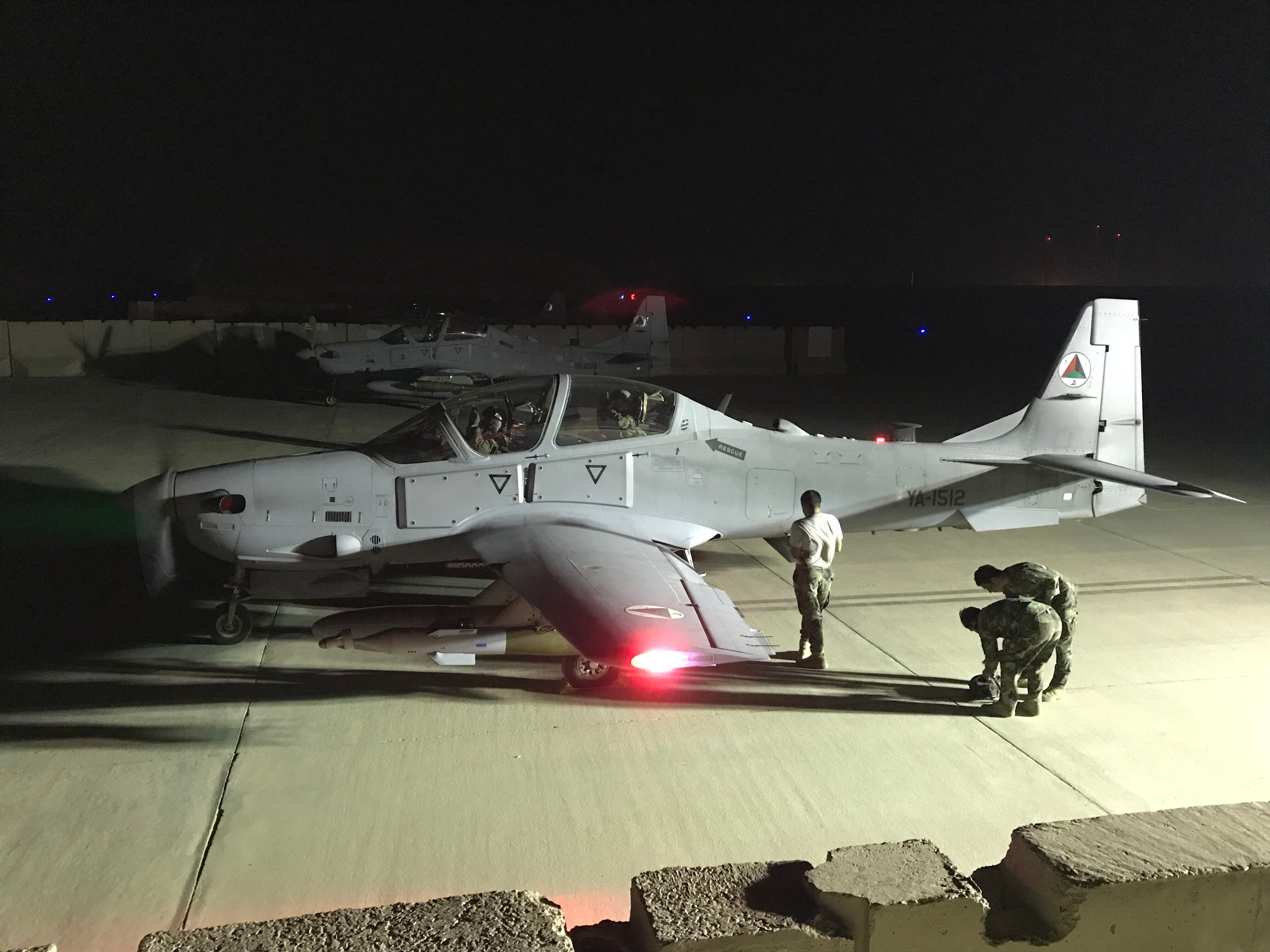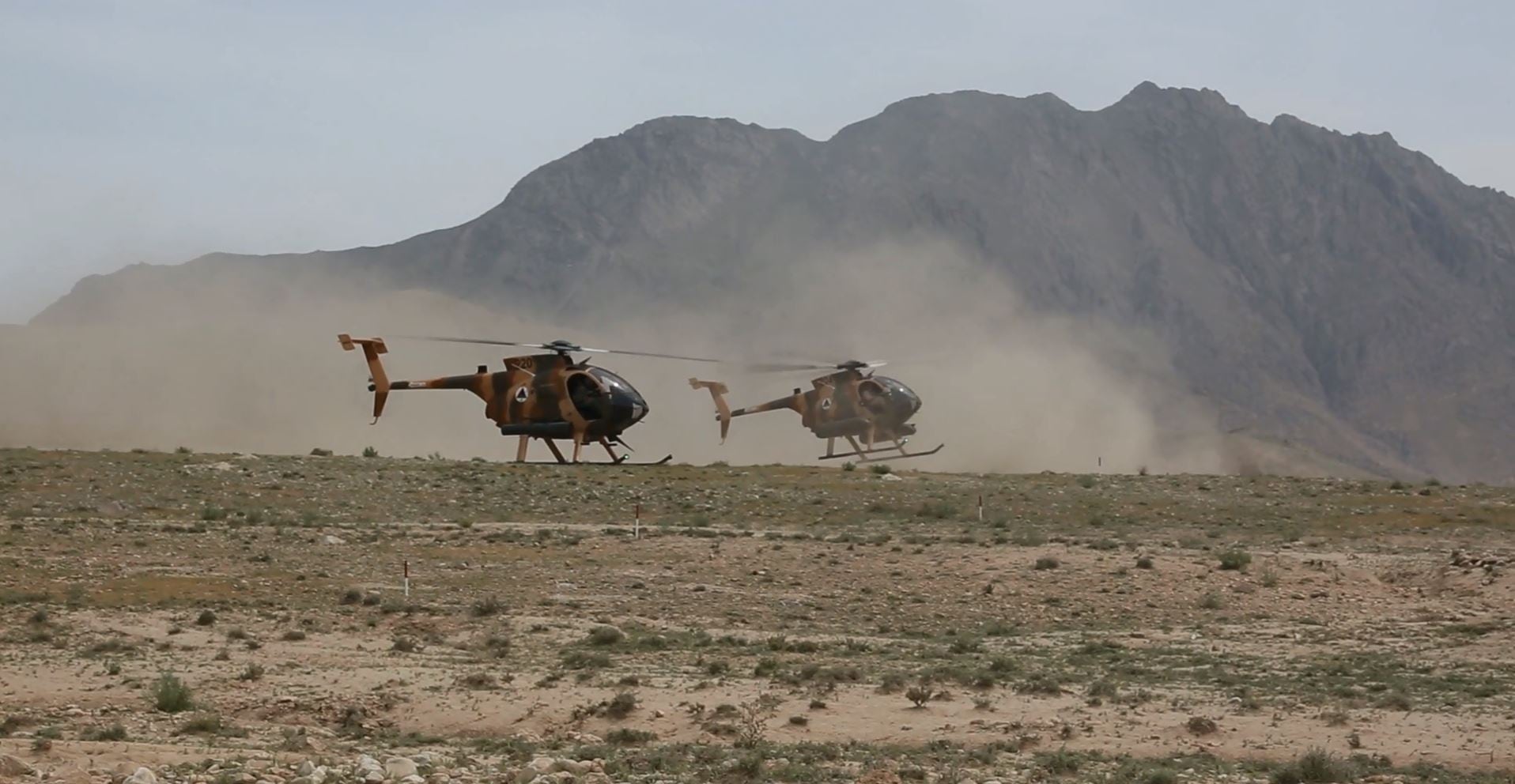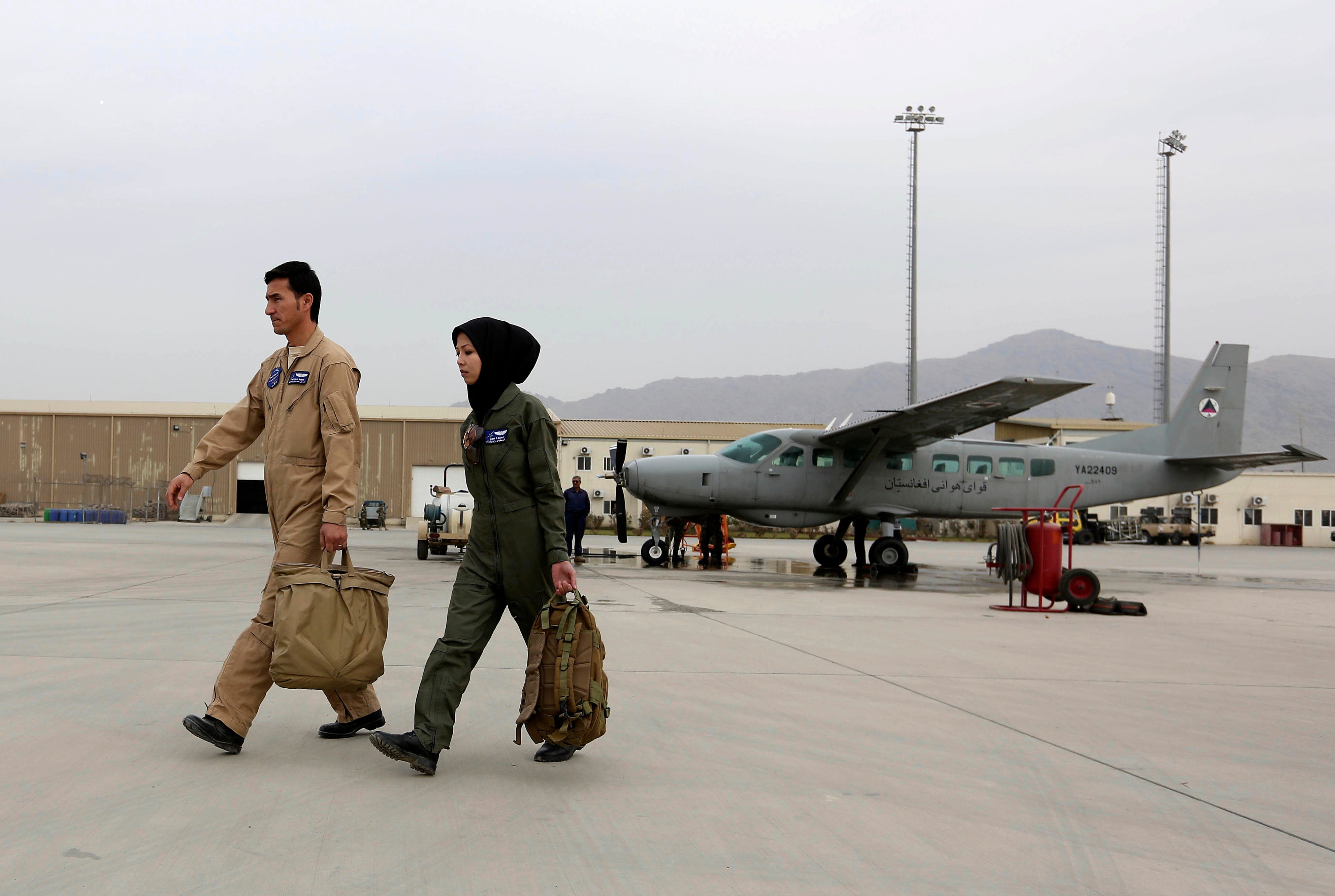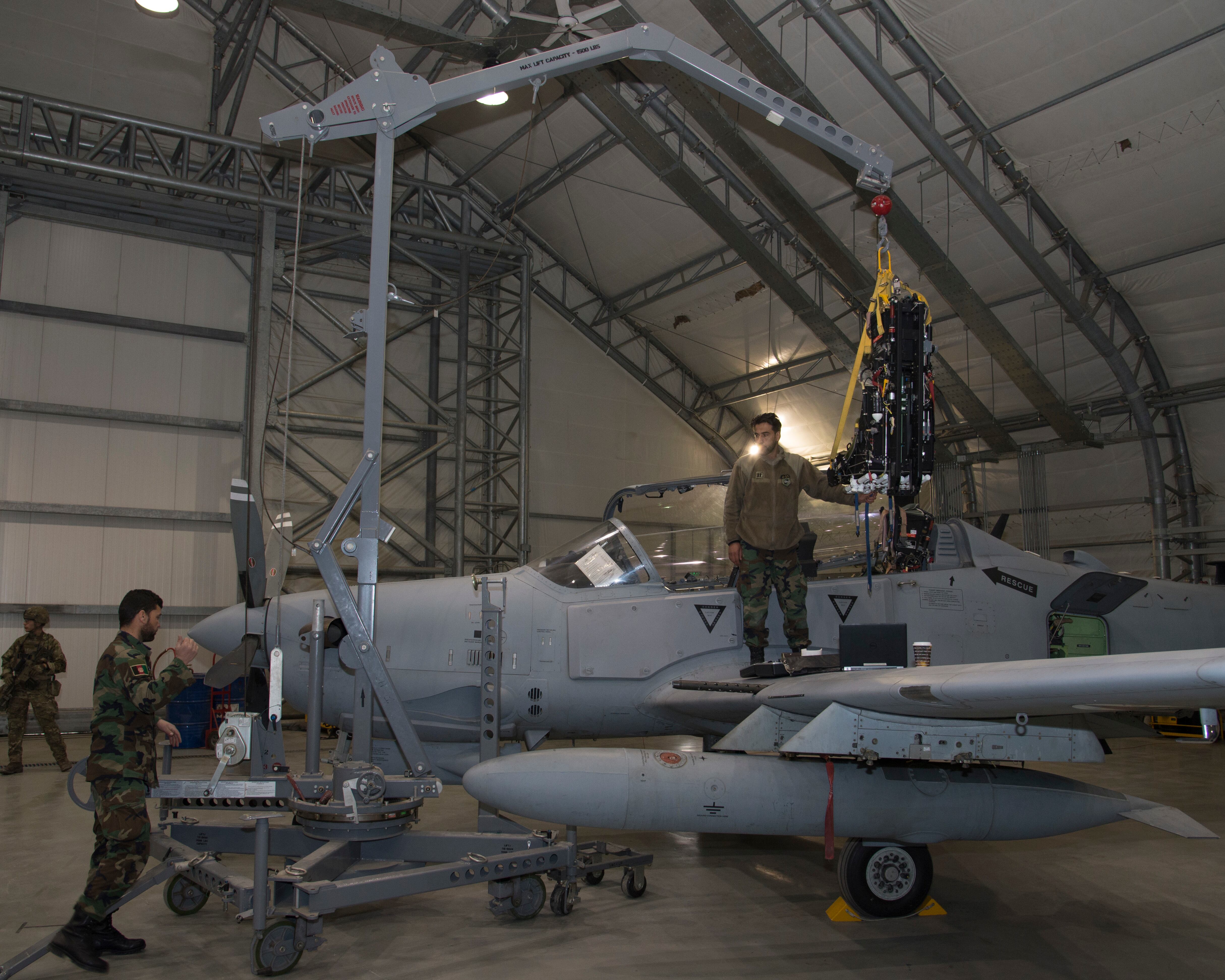After a scathing quarterly report to Congress cast more doubt on the security situation in Afghanistan, few things in the wayward country appear to be going well, except, that is, for the Afghan Air Force.
U.S. military officials in-country have lauded the growth of the Afghan airmen in the three short years since they gained strike aircraft. Officials point to the Afghans’ use of laser-guided bombs, increased close-air attack capability and growing independence as a sign of hope for the war-torn country and overtaxed ground forces.
It’s yet to be definitively seen whether the first-world air force the United States has given to a third-world country will be the boon Afghanistan desperately needs, but the progress made so far is hard to ignore.
In fact, if Resolute Support — the NATO-led mission to train, advise, and assist Afghan government forces — were to pull chocks tomorrow, and leave the country for good, the Afghan Air Force would be able to continue fighting on, according to officials who have trained and mentored the fledgling Afghan airmen.
“At the tactical level, the aviators would be able to employ just like they do every day,” Lt. Col. Justin Williams, the 438th Air Expeditionary Advisory Squadron commander, told Air Force Times.
"The whole [air attack] process is all Afghan at this point,” he said. “From the mission targeting packages, to weapons loading, to flying, to delivering ordnance, it's an entirely Afghan process."

That independence was showcased this month by Afghanistan’s A-29 Super Tucano light-attack aircraft.
During a multi-day assault against the city of Farah in western Afghanistan, the A-29s appeared to not just carry out gun runs against Taliban fighters, but also operate almost autonomously from Resolute Support.
“Of note, Afghan A-29s conducted 20 hours of support to the Afghan-led offensive,” Army Col. Robert Manning, a Pentagon spokesman, said.
“This was the first time Afghan A-29s flying from Kabul and Mazar-i-Sharif conducted airstrikes, returned to those bases, were re-armed and re-fueled by Afghan maintainers, and then returned to conduct strikes,” Manning added.
While U.S. Air Force A-10 Warthogs did fly to the city, they never had to drop weapons, although some armed U.S. drones did, according to officials.
Air-to-ground fires integration
On top of the growing independence of pilots and maintainers, Afghan tactical air coordinators, or ATACs, facilitated the airstrikes from A-29s throughout the defense of Farah.
The ATACs are a growing specialty within the Afghan Air Force similar to American JTACs or joint terminal attack controllers.
However, “we can’t call them JTACs,” Brig. Gen. Phillip Stewart, commander of NATO’s Train Advise Assist Command-Air, told Air Force Times.
“JTAC is a NATO term. For instance, the ATACs don’t speak English. They speak Dari,” Stewart said. “And that cuts down on the training for them, because the Afghans fight in Dari; they don’t fight in English,” which is the official language of international aviation.
ATACs are members of the Afghan Air Force, but they embed within Afghan Army units to call in close-air attacks from the forward line of troops, or from an Afghan-run tactical operations center.
Another important difference between the ATAC and the American JTAC is that an ATAC doesn’t have final release authority on weapons. That responsibility is owned by the Afghan pilot dropping bombs.
Still, ATACs have become an important part of ground movements, as they frequently patrol with Afghan National Army units and provide targeting data to aircraft when they come under fire.

One asset they frequently use is the MD-530 Cayuse Warrior, a small but lethal attack helicopter.
“[MD-530s] are employed more often, and they strike more often to defend people in crisis, whereas the A-29 is more of a strategic asset striking specific targets,” Williams said.
By using ATACs to mark and identify targets for aircraft, airstrikes are more focused and collateral damage is minimized, especially in urban fights like Farah city.
“To my knowledge, there was no fratricide or civilian casualties,” Stewart said of the battle to defend the western city near the Iranian border.
A-29s that responded to the Farah fight only employed their .50 caliber machine guns to strafe the enemy, and conducted low passes, known as shows-of-force, to scare off Taliban fighters — a tactic that works more often than one might first assume.
“And the reason for that was because it was a very fluid situation,” Stewart said. “You had the Taliban moving. You had Afghan police forces and Afghan National Army responding. You had civilians who were evacuating the area.”
“In a chaotic situation like that, the tendency for unprofessional forces is to just start dropping bombs everywhere,” he said.
Precision guided weapons and night fights
Afghan attack pilots have gained a bit of a reputation for their cautious employment of weapons.
A report by the Pentagon’s Inspector General found that from April to December 2016, “Afghan A‑29 pilots aborted 18 percent of their attacks against identified targets due to concerns about civilian casualties, fratricide or target identification.”
That sort of restraint is needed if the Afghan government wants to show it’s better than the Taliban and is a legitimate force for the good of the people.
Although civilian causalities were down overall in 2017, the United Nations still documented a 7 percent increase in civilian deaths from air operations specifically.
“Every loss of civilian life is deeply regrettable. However, during a time when air operations dropped weapons 300 percent more than the previous year, civilian casualty rates didn’t come close to matching that increase,” a spokesman for U.S. Forces-Afghanistan said.

A new-found capability on A-29s should help mitigate civilian deaths even more: laser guided weapons.
“Right now, it’s only the Afghans flying. It’s all Afghans on combat ops,” Maj. Paul “Outlaw” Atkinson, an Afghan Air Force A-29 adviser, told Air Force Times.
The Afghan pilots will typically provide laser guidance for one another’s bombs, commonly called a “buddy laze,” but no American pilots are heading out with them to help in the final moments, Atkinson said.
As of May 11, A-29 pilots have supported roughly 30 Afghan ground missions with these precision weapons, and successfully dropped over 50 laser-guided bombs on enemy targets, according to TAAC-Air figures.
“Last fighting season [the Afghan pilots] didn’t have the ability to drop laser-guided bombs or fly at night. This time they do,” Stewart said. “That’s a deliberate training decision.”
Over the winter, some of the better Afghan pilots were sent to Moody Air Force Base, Georgia, to train on laser-guided bombs and night flying. Those individuals were upgraded to instructor pilots in order to train other Afghan pilots down the line.
“We’re not just training them, we’re training their trainers,” Stewart added.
Some problems remain
Despite all of its success, there are still some hang-ups the Afghan Air Force needs to address if it wants to continue moving forward.
For one, approximately 80 percent of aircraft maintenance is still done by contractors, with the remaining 20 percent done by Afghan personnel.
“Over the next five years, part of the modernization program’s goals are to reverse that,” Williams said.
As it stands, the contractor’s responsibility is to train up Afghan maintainers to eventually take over their roles. And while five years may sound excessive, Williams stressed that it’s actually par for the course in terms of how long the U.S. Air Force waits to train a skilled maintainer of its own.
“It takes only about two years to create a pilot from scratch, [but] it takes about seven to 10 years to create what we would call a 7-level aircraft maintainer,” Williams said.

As for aviators, Afghan airmen who come up through the pilot training program are selected in a similar way as U.S. pilots.
They start by going to fixed-wing pilot training in the United Arab Emirates or the Czech Republic, and then are selected based on merit to fly one of the fixed-wing platforms the Afghan Air Force maintains, including the C-208, C-130 and A-29.
If they’re selected for A-29 training, they go to Moody Air Force Base for roughly a year.
Eventually, moving more training to the pilots’ home country will be pivotal. But some measure of NATO support will still be needed for years to come.
The future of the Afghan Air Force
Currently, the Afghan Air Force is approximately 8,000 airmen strong, with more than 120 aircraft.
But over the next five years, that force is essentially tripling in size, and the NATO mission will be needed to train those airmen up in “some way, shape, or form,” Stewart said.
“There comes a time when they can do it on their own, but there’s still value added to help them do it better,” he added.
The Afghan Air Force currently operates roughly 20 of their A-29 aircraft in-country at any given time, and although that sounds small, it’s actually enough, according to Stewart.
“That’s only one part of a suite of airplanes,” he said. “They’re getting 159 UH-60 Blackhawk helicopters, some of which will be fixed-forward firing. They’re going to be doubling their MD-530 fleet and they’re going to be getting a large number of reconnaissance aircraft.”
The existing C-208 light cargo planes will be augmented by the AC-208 reconnaissance version, which will have a pod of 2.75-inch laser guided rockets on each wing.
“So they’re going to a have a very large strike fleet of aircraft, and not only that, but they’re precision guided aircraft,” he added. “[The Afghans] are fighting an insurgency, and this will be enough aircraft for that fight.”
Perhaps the Afghan Air Force should have been kick-started sooner.
After all, the rehabilitation really only began in 2010, with the arrival of the C-208 light cargo aircraft. And even then, it wasn’t until 2015 that the Afghans gained the ability to conduct their own airstrikes with the help of the MD-530 helicopters, followed shortly by A-29 planes in 2016.
Taken fully, it has been only two years since Afghan pilots were first able to conduct airstrikes from planes.
“Air superiority provides a lot that would take an immense amount of technology for the Taliban to overcome,” Williams said. “That being said, the Afghan Air Force is still growing. It’s really only two years old. We’ve given [one of the] poorest, most uneducated countries on the planet a first-world air force. That takes some time and speed bumps to overcome, and they’ve done excellent, but they’re still in their infancy.”
Kyle Rempfer was an editor and reporter who has covered combat operations, criminal cases, foreign military assistance and training accidents. Before entering journalism, Kyle served in U.S. Air Force Special Tactics and deployed in 2014 to Paktika Province, Afghanistan, and Baghdad, Iraq.



